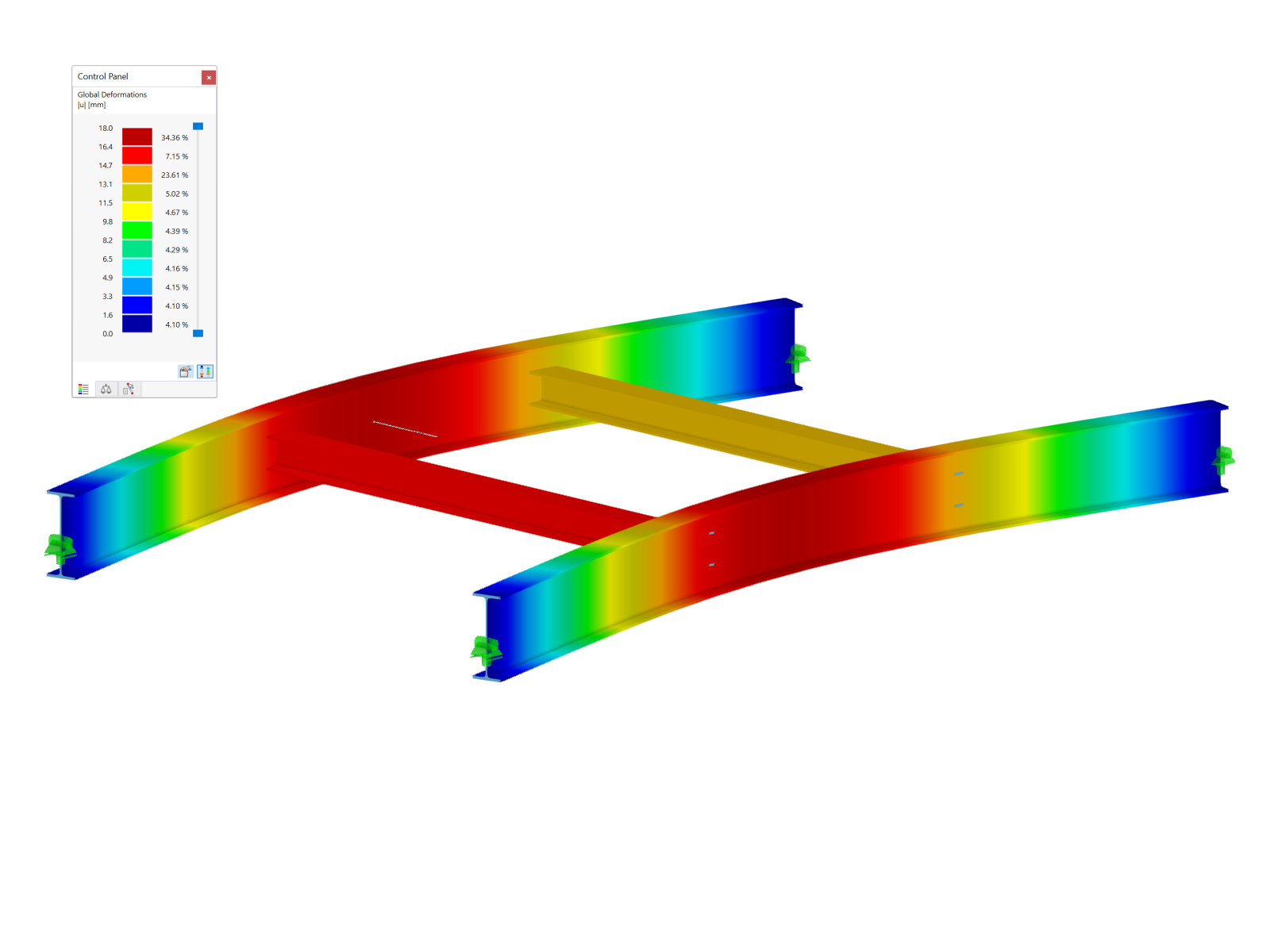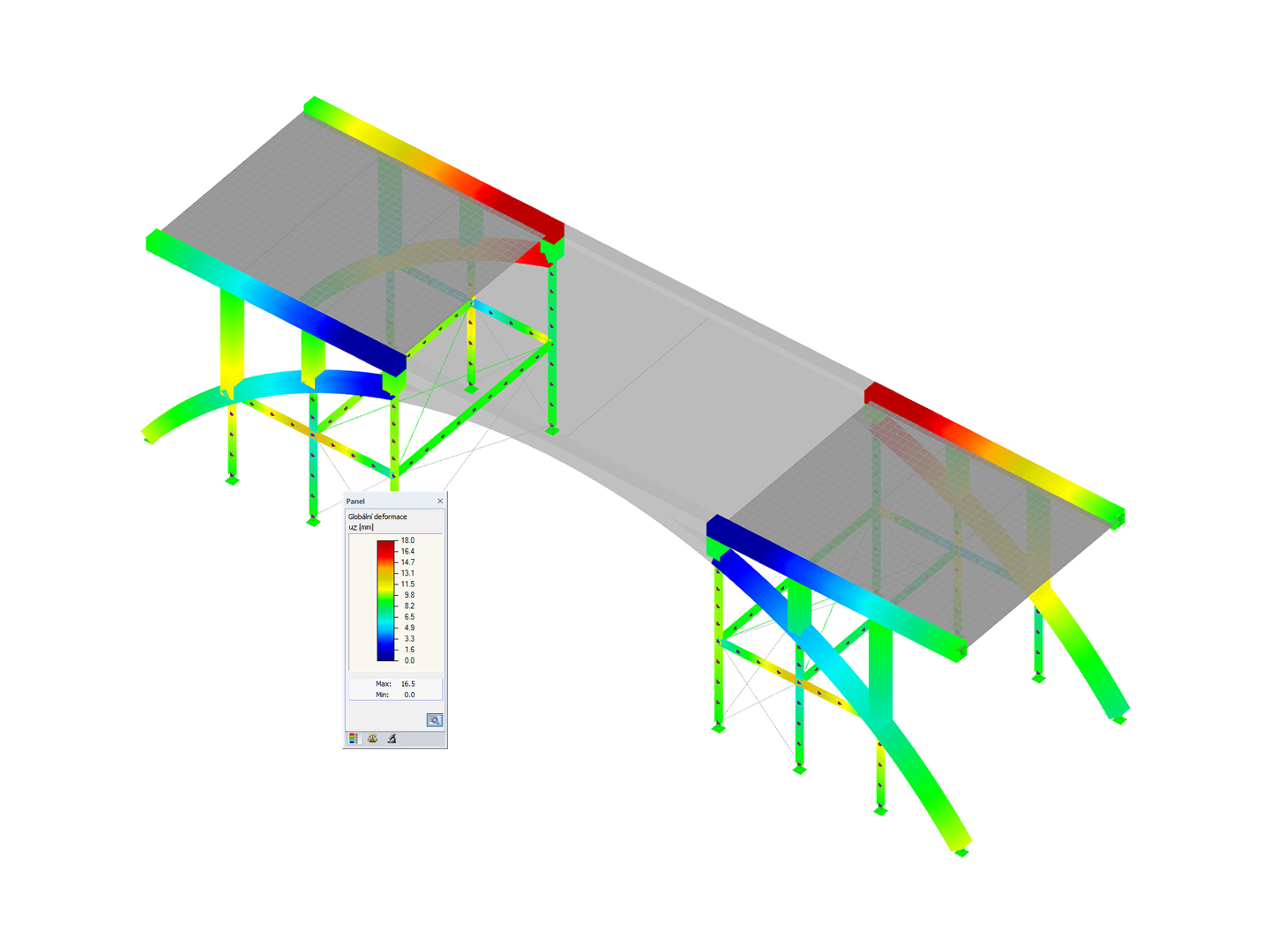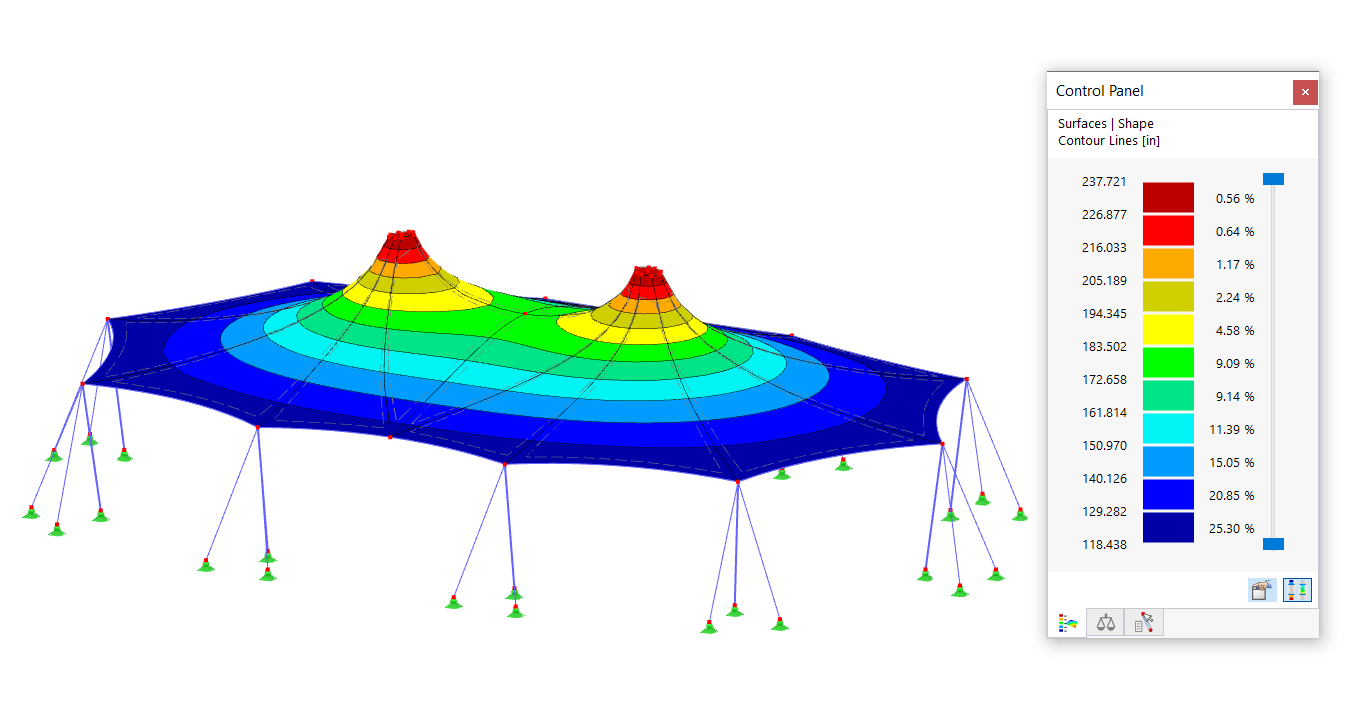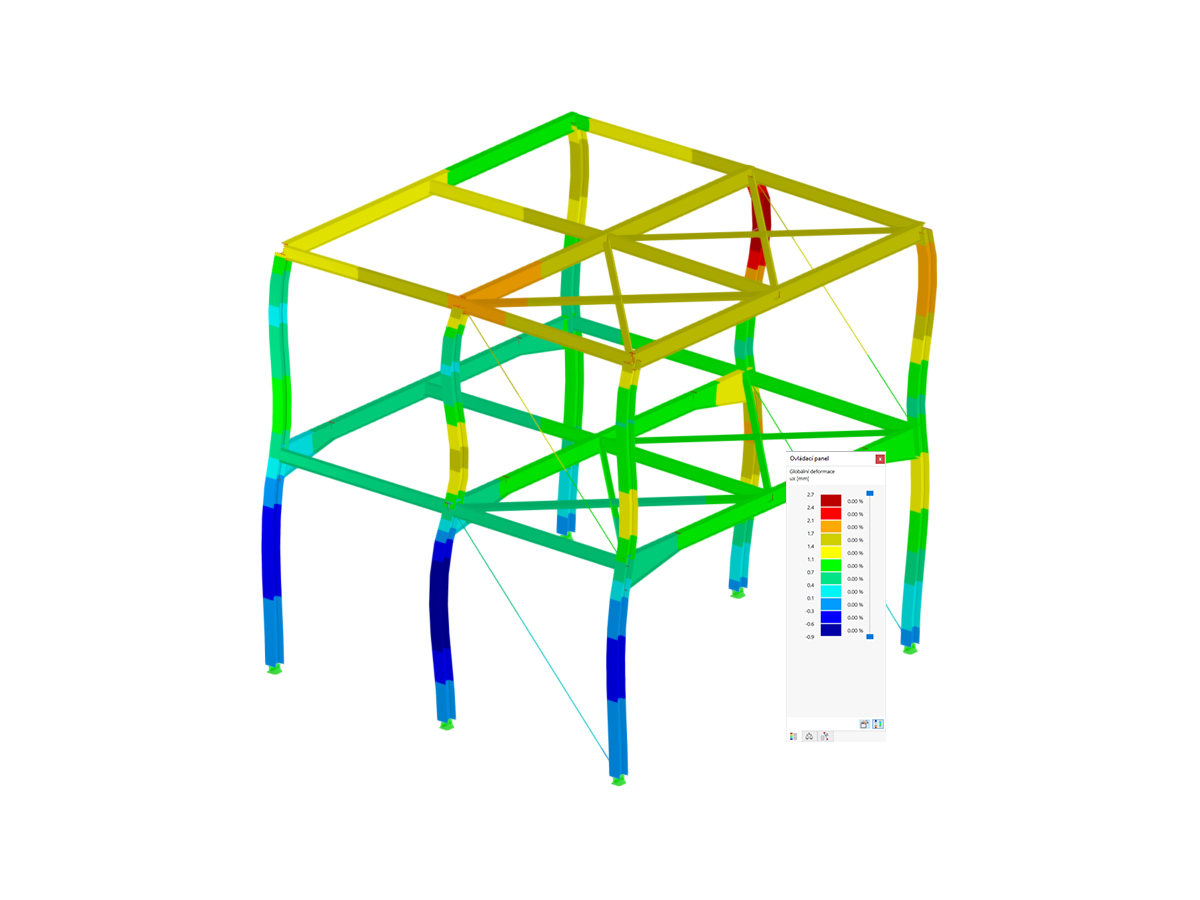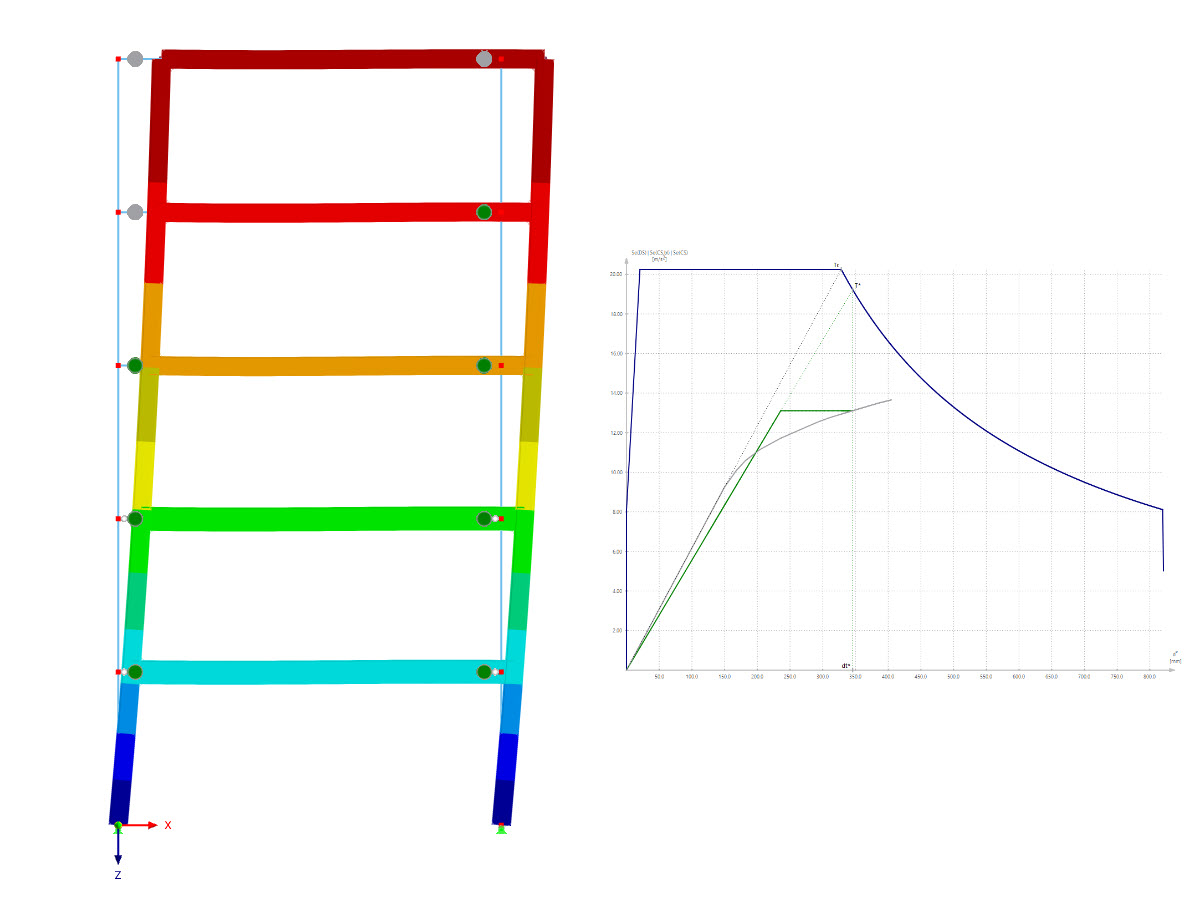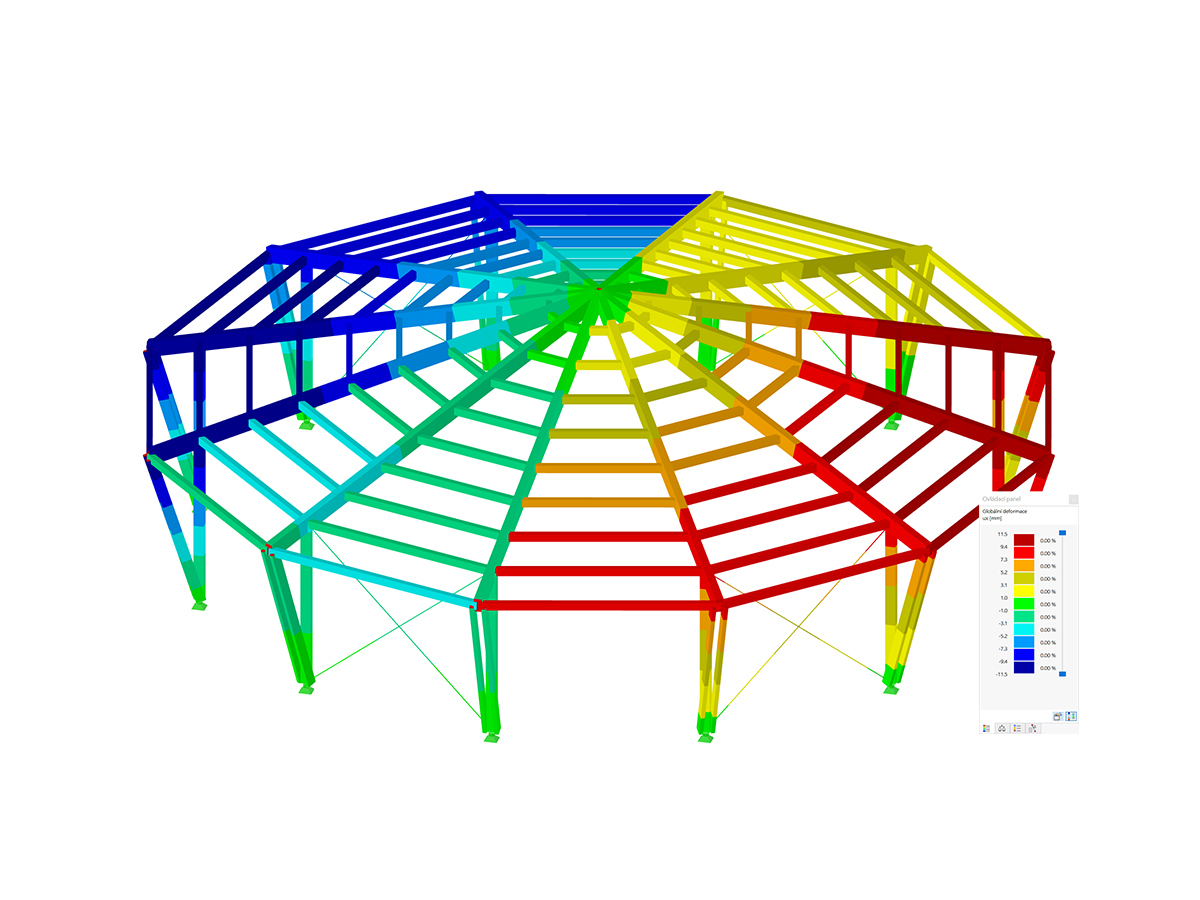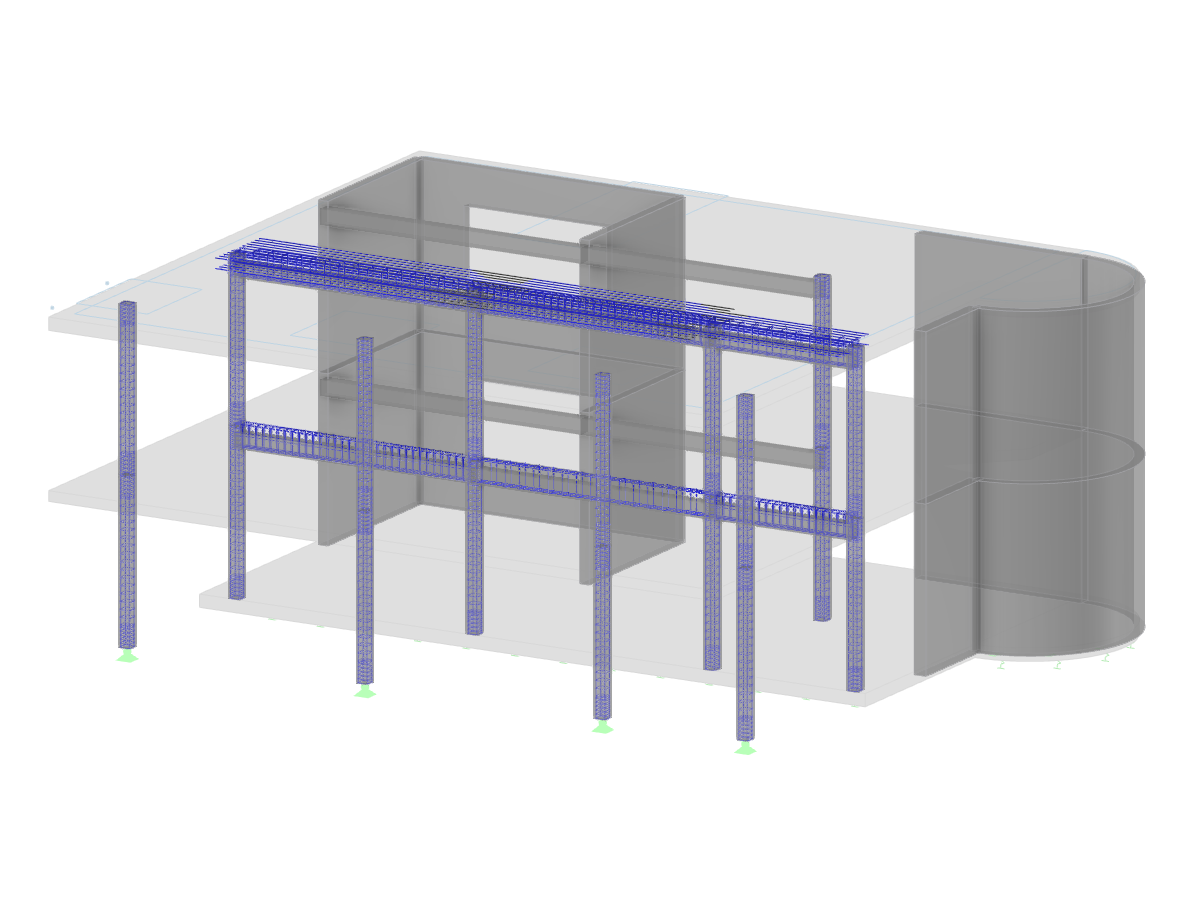The total displacement |u| corresponds to the length of the resulting displacement vector and is calculated as follows:
When using the equation mentioned above, the information about the orientation of the total displacement is lost. Therefore, it usually makes no sense to multiply the total displacements |u| of several load cases or load combinations similarly to the individual displacement or internal forces in result combinations. Instead, the individual displacement components {ux, uy, uz} are calculated separately according to the specified combination expressions. In the graphical output of the minimum and maximum total displacements |u| all minimum or maximum displacement components from the entire result combination are then superimposed. The graphical display of |u| thus corresponds to an envelope that covers the displacement diagrams from all "sub-combinations".
However, it is very unlikely that all the minimum/maximum displacement components will occur simultaneously in a "sub-combination" – the values calculated for the total displacements will then lose their significance. Therefore, as of the versions RFEM 6.06.0014, RSTAB 9.06.0014, RFEM 5.35.01, and RSTAB 8.35.01, only the displacement values actually occurring in a subcombination are displayed numerically (in the graphical output and in the tables).
The discrepancy between the "envelope" display of the displacement diagrams and the numerically displayed values for the extreme total displacements |u| can be illustrated using a clear example:
The deformations at the top of the cantilever are included in the following table:
| Load Case | |u| [mm] | uX [mm] | uY [mm] | uZ [mm] |
|---|---|---|---|---|
| 1 | 193.1 | 0 | 27.2 | 191.2 |
| 2 | 109.3 | 0 | 108.9 | 9.6 |
For the result combination with the alternative action of LC1 or LC2 (LC1/p or LC2/p), the following displacements are now displayed:
It is clearly evident that the deformations shown do not occur in LC1 or LC2 – they represent an envelope of all deformations potentially contained in the result combination. The values of the minimum/maximum total displacement displayed at the free beam end and listed in the table correspond to the actually occurring values from the considered sub-combinations. These values can differ greatly from the vectorial displacements of the cantilever end, as in the example! Thus, the enveloping deformation and the listed numerical values should be analyzed and evaluated separately.
However, the determination of the minimum and maximum total displacement of a result combination is not always exact. The result combinations are effective in the calculation, because the superposition principle is applied – but this is not valid for the total displacements |u| (missing information about the orientation). The exact calculation of the minimum/maximum total displacement |u| would require the calculation of all displacement components {ux, uy, uz} of all sub-combinations and an analysis with respect to |u| . In order to ensure efficient work with result combinations, only the sub-combinations with a minimum or maximum displacement component {ux, uy, uz} are analyzed to determine the minimum/maximum total displacement. In case of doubt, the total deformation of a structure should be evaluated in load cases or load combinations.







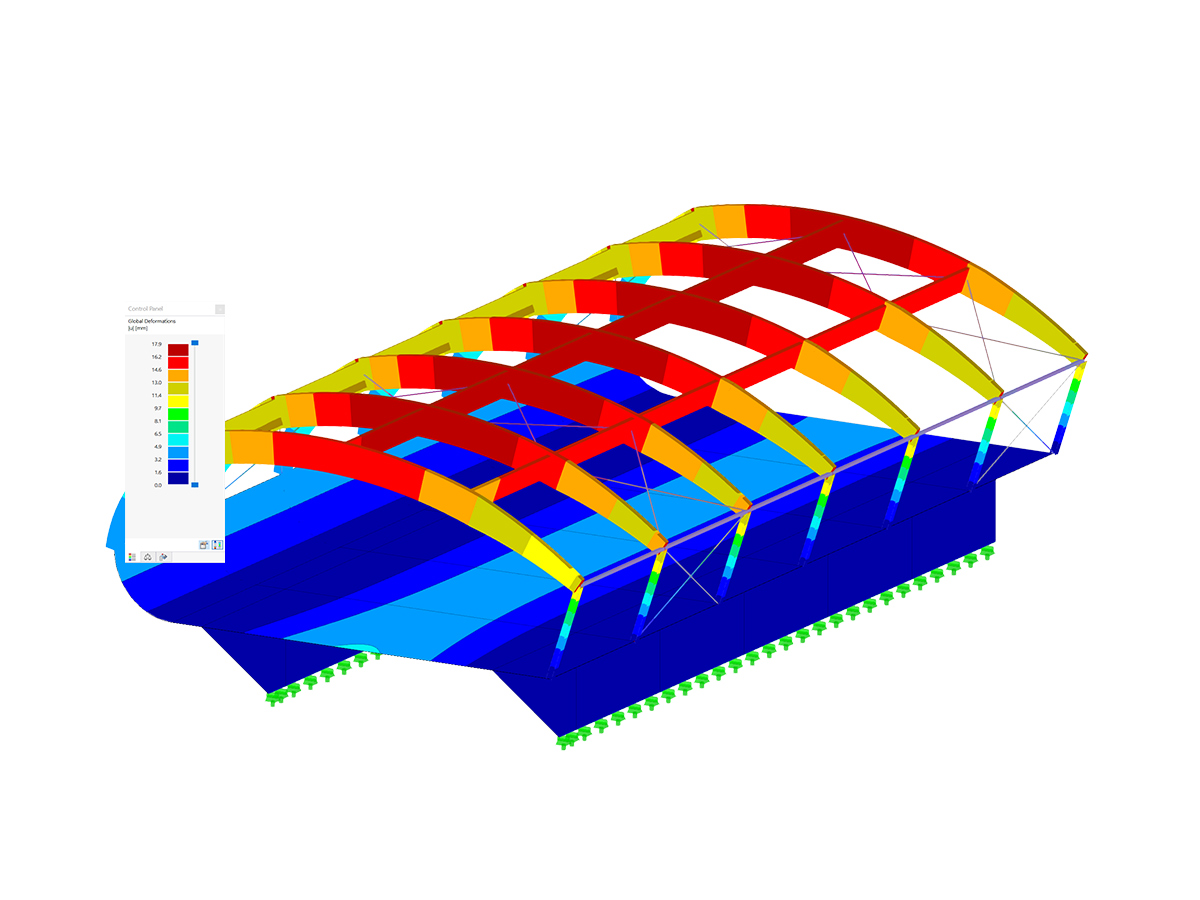

.png?mw=600&hash=49b6a289915d28aa461360f7308b092631b1446e)
